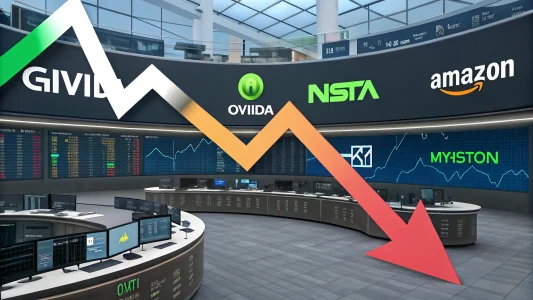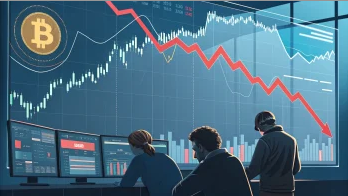Table of Contents
ToggleTariffs and International Trade
The conversation began with a discussion on tariff announcements. Recent moves have resulted in new tariffs being applied to 14 countries. Of these, only five carry rates are identical to those that led to a significant market downturn on April 2. At the time, the market experienced a 20% drop when these rates were first introduced. This incident highlights the sensitivity of financial markets to familiar policy measures.
The current situation is evolving. There is a plan to finalize tariffs for an additional 70 countries within the next three weeks, pending any further delays. This extended deadline creates an atmosphere where investors feel uneasy and policymakers work under pressure. In clear terms, the tariff decisions are not simply a mock display of caution. Instead, they represent a deliberate strategy despite public skepticism.
Here are some of the highlights related to the current tariff measures:
- 14 new tariff announcements were made, with five in particular mirroring rates known to impact the market.
- The remaining tariffs for 70 countries are scheduled for finalization soon.
- Market stakeholders are keenly aware of the historical impact of these rates.
Although these bullet points provide a concise overview, the underlying economic factors are more intricate. The design of these policies has roots in ongoing trade disputes and a desire to protect domestic industries. There is no hesitation in applying measures, even when the rates have had severe market repercussions in the past.
View this post on Instagram
Political Commentary and Policy Actions
The conversation also took an unconventional turn with some colorful commentary. A nickname was thrown around, suggesting that the leader has “chickened out” on more rigid stances. Such remarks, though informal, hint at the persistent divide between supporters and detractors of current policies. Whether one holds a favorable view or not, it was noted that dismissing these actions lightly is not entirely justified.
The discussion acknowledged that while the leader is sometimes mockingly referred to by nicknames, there is an undeniable consistency in getting policies passed. Since the notable market drop on April 2, significant actions have taken place—one issue involved interventions in a long-standing crisis in the Middle East. Although referring to it as having “handled” the crisis might imply a final resolution, it is more accurate to say that there was intervention. In another move, a major tax overhaul was pushed through despite widespread disagreement.
My personal views do not fully align with every decision made, I recognize that the leader’s approach is characterized by a relentless drive to complete projects. In these moments, a blend of resoluteness and controversy prevails. The policies may not satisfy everyone, but there is a clear commitment to implementing change.
A key quote from my observations captured the sentiment succinctly:
“I’m not saying I agree with everything he does. Let me be clear, I don’t. But he does get done.”
This statement reflects the pragmatic reality of governance. Even if one remains critical of the strategies or the style of execution, there is a need to acknowledge that policies are consistently carried out.
Market Reaction and Future Outlook
The market’s reaction to tariff announcements is a central point of discussion. The fact that the same tariff rates once led to a dramatic market downturn has left investors wary. The historical memory of a 20% drop on April 2 still resonates in discussions today. Investors closely monitor these developments, aware that even small repetitions of past errors can trigger significant price swings.
The planned finalization of tariffs for an additional 70 countries only adds to the cautious optimism mixed with anxiety currently prevalent in trading circles. While some view this as a necessary correction in trade practices, others see it as a potential trigger for renewed market turbulence. The next three weeks are expected to be crucial in shaping the course of international trade relations and confidence in economic management.
From my perspective, while the measures may bring short-term instability, they are also part of a broader strategy aimed at recalibrating trade dynamics. In my role as a financial advisor and policy observer, I have consistently observed that economic policies can have far-reaching and sometimes unexpected consequences. Investors and policymakers alike must stay alert to these shifts.
Reflections on Controversial Decisions
In reviewing these recent developments, I find it necessary to examine the broader implications of such policy decisions. The discourse around tariffs and political maneuvers is deeply intertwined with broader debates on economic strategy. On one hand, there is criticism and skepticism. On the other hand, there is an acknowledgment that action–even if controversial–represents a commitment to change.
The intervention in the Middle East raises several questions. While some critics argue that no lasting solution has been reached, the fact remains that decisive actions were taken. It is important to note that intervening in such a long-standing regional issue is no small feat. However, effective intervention does not necessarily equate to complete resolution. The work continues, and the full impact of these decisions may only be measurable over time.
Similarly, the massive tax overhaul that was passed is a subject of widespread debate. Some argue that such a measure was long overdue. Others contend that the tax changes were implemented hastily and without sufficient consensus. My personal view is tempered by professional responsibility: I acknowledge the benefits that structured tax reforms can have on an economy, even if I remain critical of every detail.
This ongoing debate highlights the complexities of policy-making in our current economic environment. It demonstrates that political decisions are rarely black or white. Instead, they reflect a tapestry of competing interests, ideals, and pressures.
Personal Insights and Professional Observations
During my tenure as CEO of LifeGoal Wealth Advisors, I have witnessed the unpredictable nature of economic cycles and the impact of significant policy shifts. This recent episode is a reminder of the delicate balance between policy decisions and market reactions. The decision to extend the final deadline for tariff announcements shows that policymakers are under constant pressure to both adapt and maintain control.
It is crucial to understand that while public commentary and humor may sometimes oversimplify the narrative, the underlying issues are deeply serious. The financial market is a reflection of collective sentiment, and policy moves such as these provide real and immediate feedback to market participants.
I find it compelling to note how quickly markets can react to policy signals, even when the same rates have been used before. This serves as a stark reminder of the lessons learned from past market downswings. Investors recall the shock experienced on April 2 and remain vigilant in anticipation of any recurrence.
Moreover, observing how political figures manage the dual demands of policy enforcement and public engagement offers valuable insight. It forces us to consider the broader implications beyond immediate market reactions. In this case, the unwavering drive to finalize policies, even in the face of criticism, suggests an approach that prioritizes action.
Looking Ahead
As we move forward, investors, policymakers, and the public alike need to monitor these developments. The next several weeks will be crucial in determining the final shape of tariff policies. At the same time, ongoing political interventions and reforms will continue to influence both domestic and international economic relations.
The situation serves as a reminder that active policy-making often involves tough decisions that may not please everyone. While I may not agree with every decision, the ability to complete and enforce policy actions is a noteworthy factor in assessing leadership effectiveness. It is a call to strike a balance between critique and acknowledgment of the efforts involved.
It is also essential to understand that market conditions can shift rapidly. What worked in one instance might have different implications in another. Therefore, staying informed and evaluating the context of each decision is paramount.
I encourage anyone interested in these topics to pay close attention. Whether you are an investor, a policy observer, or simply someone looking to understand the dynamics of current affairs, the broader picture is always more nuanced than the headlines might suggest.
Conclusion
The interplay between tariffs, market reactions, and political decisions has never been more evident. The recent policy actions illustrate a determined approach and a willingness to follow through despite controversy. Reflecting on these events has strengthened my understanding of how decisive action, even when contentious, can shape economic and political outcomes.
While opinions on these measures vary greatly, the key takeaway is the persistence of policy execution. There is much to learn from both past mistakes and current strategies. As we watch these developments, it is clear that continued engagement and scrutiny of policy decisions are crucial for everyone involved.
My recommendation to readers is to remain informed and critically assess the decisions made by our leaders. In doing so, we can better navigate the often tumultuous interactions between policy and market performance.
Frequently Asked Questions
Q: What factors influenced the recent tariff announcements?
The measures stem from longstanding trade disputes and a desire to protect domestic industries. Familiar tariff rates that once caused market turbulence are being reinstated, suggesting a deliberate return to previous strategies.
Q: How did market participants react to these policies?
The market still remembers the sharp downturn that occurred on April 2. Even though some rates have reappeared, investors remain cautious, knowing that repetition of past policies can trigger significant reactions.
Q: What additional political issues were discussed during this period?
The dialogue also touched on broader political actions, including intervention in complex Middle Eastern issues and a major tax overhaul. Despite mixed opinions, these initiatives add another layer to the ongoing debate over policy effectiveness.

















